Citrinin
Citrinin is associated with poorly stored grains, but can be present in water-damaged buildings. It’s often found along with Ochratoxin, another kidney toxic mycotoxin.
It has a very broad spectrum of negative impacts on the body, but the kidneys take the biggest hit. Both the kidneys and liver are involved in its detoxification, so treatments are targeted toward supplying Citrinin-specific protection for these organs.
Chief among its other negative impacts is mitochondrial dysfunction, with symptoms showing up most prominently in organ systems under high demand, such as the heart, digestion, and reproduction. Citrinin can also impede fertility and prevent successful pregnancy.

Signs & Symptoms
- Fatigue, commonly with muscle pain
- Reactive blood sugar
- Urinary pain, frequent urination, nephrogenic diabetes insipidus
- Edema
- Reflux, nausea, vomiting, diarrhea
- Ulcers, blood in stool
- Food sensitivities
- Chemical sensitivities
- Short of breath
- Heart palpitations, chest pain
- Menstrual changes, miscarriage
- Infertility in both genders
Toxicity Revealed
Citrinin was previously used as an antibiotic and investigated as a drug to reduce cholesterol, but its use was discontinued due to toxic effects on the kidneys.
Download the Citrinin Fact Sheet for Patients
 Loading...
Loading...
Citrinin Q&A with Dr. Crista
Medical Practitioner Technical Sheet
The Citrinin Tech Sheet for Practitioners is included in the Updates in Mold-Related Illness course materials


